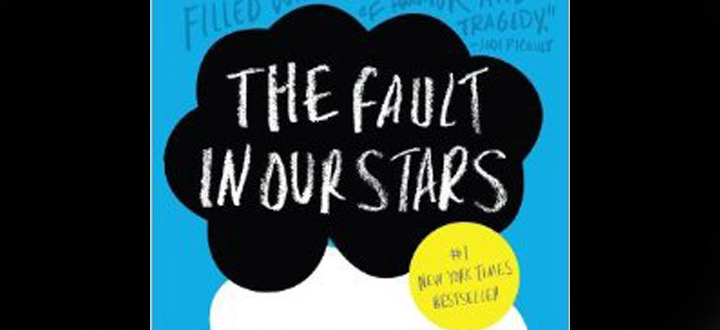Books in the Young Adult (YA) genre tend to trend in sporadic bursts, with young fans obsessing over the latest burst and quickly moving onto the next, though never completely losing their love for the previous one. Books that achieve widespread popularity are then often adapted into movies, which are welcomed by flocks of people at the cinema. One of the more recent bursts presented the book “The Fault in Our Stars” by John Green into the spotlight. Given that this book’s film adaptation has been recently introduced into Korean cinemas, I felt that not reading the book would be an injustice. Green’s novel has its flaws; however, he manages to wrest your attention away from these flaws well enough for the book to be considered extremely entertaining and emotional.
Given my ambivalent opinions on this book, I would be tempted to play devil’s advocate when discussing this book with others. However, seeing as I have no one to argue with here, I’ll offer a comprehensive analysis. Let’s start with the positive.
The story revolves around the lives of two teenage cancer patients, Hazel Lancaster and Augustus Waters, who fall deeply in love with each other. The two initially meet at a cancer support group and quickly bond over books and films, including “An Imperial Affliction.” This book becomes of major importance because key plot developments occur when they travel to Amsterdam to meet Peter van Houten, the author of “An Imperial Affliction.”
As the romantic aspect of the novel unfolded, I couldn’t help but notice the plethora of philosophical and metaphorical statements and actions that both Hazel and Augustus make and undertake. For example, Augustus always carries around a pack of cigarettes, and often sticks one of them in his mouth—but never actually lights it. He philosophizes that he should: “put the killing thing right between [his] teeth, [without giving] it the power to do its killing.” The deep near-philosophical metaphorical resonances help give the book a level of sophistication that one cannot help but be drawn into.
In addition, Green is brilliant when it comes to inciting emotional impulses and reactions of the reader. Whether Green does this intentionally, or is merely a side effect of the plot, “The Fault in Our Stars” powerfully influences readers with feelings of sadness, happiness, fury, etc., as they delve deeper into the plot of the novel. Readers will chuckle and cry along with the characters.
However, such dynamic aspects of the book give away to its negative, surreal side. Neither Hazel nor Augustus possesses the typical characteristics of a teenager. Though it is entirely plausible that certain, possibly more intellectual teens would incorporate metaphors and philosophical remarks into their conversations, these characters almost exclusively converse in deep, rich comments, making the dialogues and narration seem bizarre, due to its unlikeliness. Do 16-year-old teenagers ever ponder upon why scrambled eggs can only be represented as breakfast foods? How often does anyone hear a teenager say something like this in common conversation: “I think the universe is improbably biased toward the consciousness, that it rewards intelligence in part because the universe enjoys its elegance being observed?”
Such character flaws can be justified by the statement that Hazel and Augustus are unique teenagers who are prone to such deep remarks. However, what was inexcusable was the romantic aspect of the novel. Romance can add to the quality of a novel’s content and enhance the enjoyment of reading it. The romance in this novel was, by contrast, flat and sudden. It’s not that Green doesn’t allow the readers to get swept up in the romance—he does. The problem is that the romance occurs too suddenly and abruptly, almost like a slightly drawn-out version of “love at first sight.” Though the relationship did have its slight ups and downs in the beginning, as it should’ve had, it still didn’t allow readers to rid themselves of the impression that things kicked off too fast, and this small fact could easily lead readers to be more skeptical of the novel as a whole.
This book is enthralling and takes readers on an emotional journey—perhaps not as heightened as fans will say it is, but emotional nonetheless. I would just warn you to beware of the slight flaws that cause a more surreal aspect of the novel to unveil itself—an aspect that doesn’t seem to have a place in the novel. The metaphorical journey that “The Fault in Our Stars” takes readers on is seemingly unaffected by the evident faults—and thus comes with my recommendation.
Look for “The Fault in Our Stars” in the library and in bookstores. Then go watch the movie!

